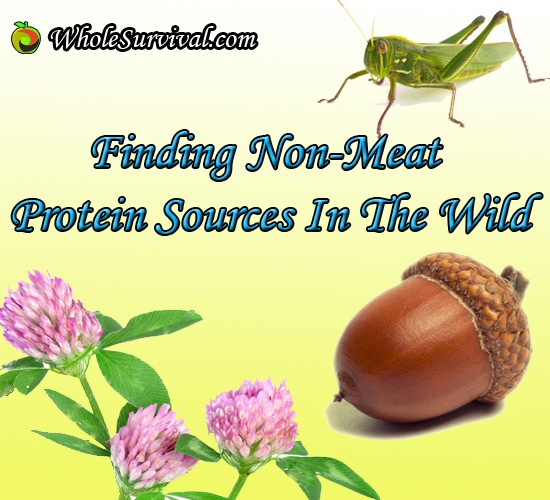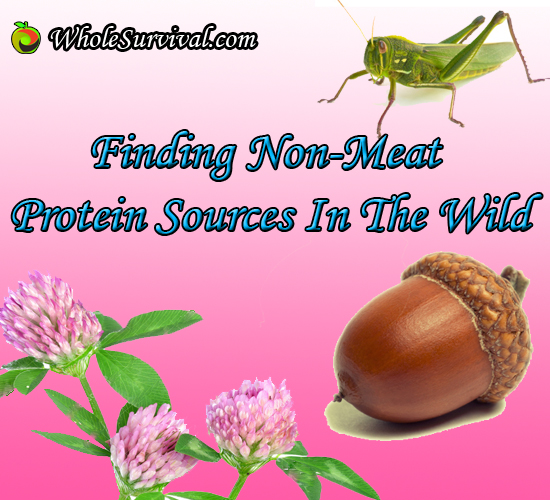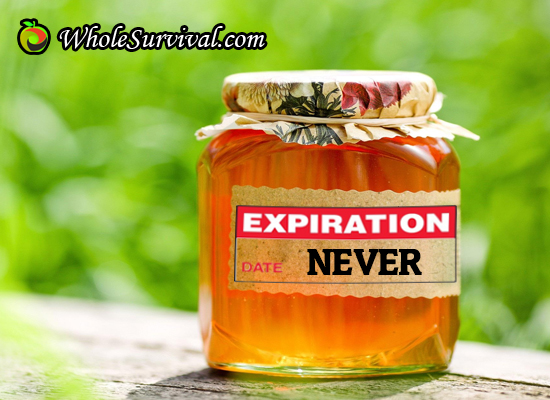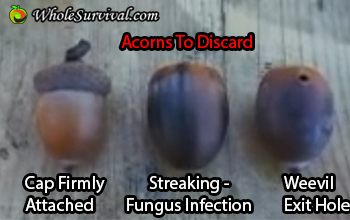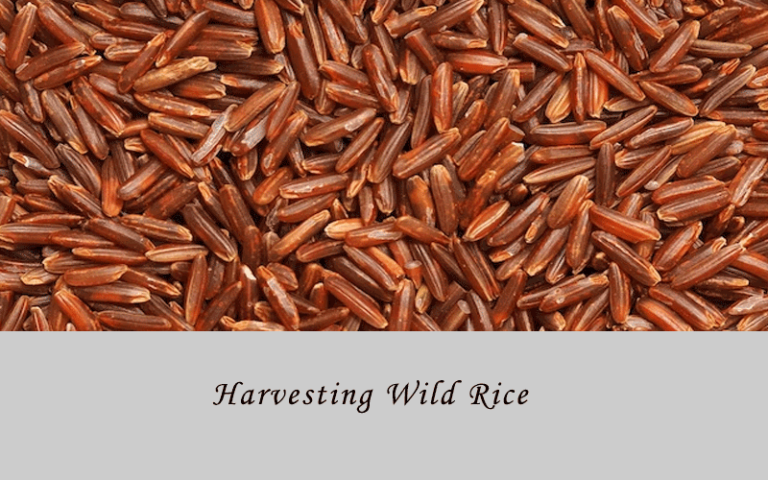Finding Non-Meat Protein Sources In The Wild – Insects
A prepared individual might be saying, ‘I won’t be needing to forage at all, I’ve got enough food stored up to last me for months/years’, or ‘I’ve got a garden so I’ll be fine with what I grow’, etc… While it might be true that you would do perfectly fine at your bug out/in location for a long time, there are a number of situations that might make you leave a location that you intended to hole up in.
A situation like a fire (and there will be lots of out of control fires around urban and suburban areas), flood, or government agency evacuating an area, etc.. will force you to leave your safety zone and perhaps make you an unintended refugee. While you might have your Bug Out Bag (BOB) with you (which of course contains a portable water filter), there’s a good chance that you won’t have enough food to last more than a few days.
On top of those stressful conditions, you might have to be walking a good distance to find a reasonable new place to stay. This will get you burning many more calories than normal that you will need to replenish. That is where the need for some wild protein will come in.
Obviously there are many scenarios we can come up with, but whatever the reason, you might be needing to collect some extra protein from your surroundings. Meat is the primary source of protein for most people in developed countries, and so hunting and trapping will be a great source of food with the right equipment. That is until the wild life is all but extinguished from the amount of people catching everything that moves after all the grocery store food runs out.
So besides animals, where can you find protein in the wild?
Insects As Protein
We’ve all heard that bugs are a good source of protein. There’s actually a word for eating insects – entomophagy. But we need to overcome two issues when using insects as a food source. First, you need to find enough of them. Second, you need to get passed the idea of being grossed out and actually eat them. Actually, most of us are already eating bugs in our everyday food and don’t even know it!
Insects are a significantly more sustainable source of protein than most meat actually, we just have to get used to the idea I guess. If it helps, insects are closely related to animals such as the lobster, crab, shrimp and crayfish. Maybe imagining eating a shrimp with its shell on would would make it easier to down a few beetles? Let’s hope so.
Insects To Eat
To get the most out of your searching, it’s best to try to find either large insects or batches of smaller insects. Good places to search include behind loose bark, in decaying stumps, and long grass. While there are thousands of edible kinds, here are a few typical critters that you might find more easily in North America:
Ants
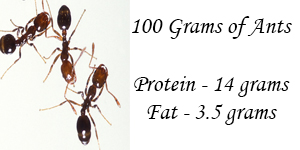
A 3.5-ounce (or 100 grams) serving of ants contains about 14 grams of protein and 5.7 milligrams of iron. Ants are also a good source of calcium. When collecting ants it’s best that you let them come to you by having a container with food bait inside next to the nest and just shaking it out to collect them occasionally.
Termites
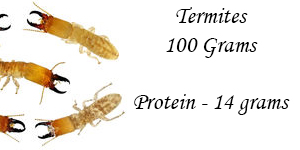
Similar to ants, they have the same amount of protein, but have three times the iron.
Beetles
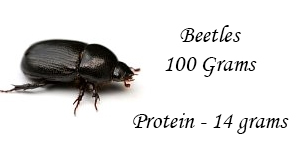
The most commonly eaten beetles are the long-horned and June Beetle varieties. Native Americans ate them like popcorn. Beetles also have more protein than most other insects.
Caterpillars
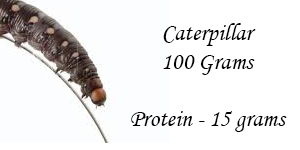
The larval stage of moths and butterflies. To be safe, it’s best to cook them as there are many kinds that are poisonous. Spiny or hairy ones should be avoided as well as monarch caterpillars. In my research caterpillars can be very variable and can have anywhere between 10 to 25 grams of protein per 100 grams of weight.
Cicadas
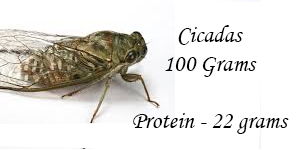
Newly hatched cicadas are called tenerals. These would be the first choice. You’ll be looking for these at dusk as they crawl up the base of the tree. Next to eat would be the adult females, which also contain lots of protein in their abdomen. Take the wings off first. Last would be the adult males that are more exoskeleton and mostly hollow inside. Provides about ten grams of protein.
Crickets
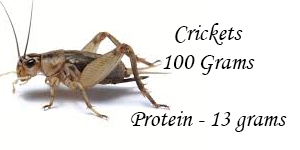
One of the most frequently eaten insects because of its ease of ‘farming’ and more palatable taste. We have more data on crickets than other insects. 100 grams of cricket (about 50 of them) contains: 121 calories, 12.9 grams of protein, 5.5 g. of fat, 5.1 g. of carbohydrates, 75.8 mg. calcium, 185.3 mg. of phosphorous, 9.5 mg. of iron, 0.36 mg. of thiamin, 1.09 mg. of riboflavin, and 3.10 mg. of niacin.
Grasshoppers
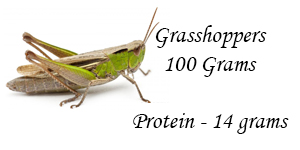
Similar to crickets and cicadas, the best part to eat is the abdomen.
Grubs
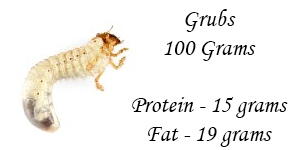
Not too difficult to find, just dig up your lawn and you’re sure to find some.
Wasps (and Bees)
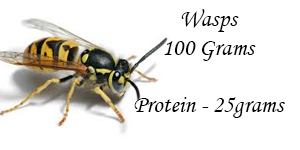
They are safe to eat if you remove their stingers. Boiling them destroys the poison as well. I’d probably do both. They are eaten in many places in Japan actually. I wouldn’t attempt harvesting a nest, but individually they are easy to find on flowers.
Worms
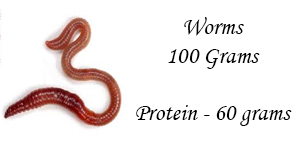
You’ll find that mealworms are often talked about when using insects as food, but those are hard to find in nature. I’m talking about earthworms here. They are mostly muscle actually and have a very high protein content. Plus no heads or crunchy parts. At night or after a rain you will more easily find them without having to dig.
How Many Insects Do I Need to I Really Need To Eat
I know, the less you need to eat the better, so I’ll give you a short breakdown of the numbers. Insects don’t come with FDA nutritional labeling (if you can imagine!). But when I could find it, I listed the amount of protein that the insects provide by weight.
To give those numbers perspective, a typical person needs about 50 grams of protein a day while not doing much physical activity. You would need to eat 20,000 ants to get that amount, but only 15 large grasshoppers, or 25 average worms.
Insects To Avoid
- Stay away from bugs that are covered in fuzz.
- Beware of brightly colored insects (like ladybugs) as they are poisonous.
- Disease-carrying species like flies, mosquitoes, and ticks are to be strictly avoided.
- Insects that smell bad, a sign of some sort of noxious chemical.
- Cockroaches – Cockroaches are great to eat but only when they have been raised/farmed in a clean environment. You might come across scores of them while scavenging homes for supplies, but they can harbor many diseases so it’s best to avoid them.
Eating Insects
A Few Words Of Caution
Insects are arthropods, which is in the same group as the seafood crustaceans listed above. If you are allergic to shrimp or other shellfish, it would be wise to be cautious about eating insects as the allergy might carry over to them as well. This is especially true for cicadas and grasshoppers more than worms however.
Insects can accumulate many toxins if they have been living in areas that have been polluted by insecticides, pesticides, or heavy metals. Some towns have pesticide bans and that would be fine for insects that stay within a small territory, like ants or worms. Other winged insects can cover a lot more area so be aware of your surroundings especially in an urban or suburban setting when you are eating anything from nature.
Also, don’t forget to wash them. It’s common sense but you might forget because you’re distracted by thinking about how gross they are.
Protein Profile
Now, I don’t think this is an issue, but I will include it as I came across it on my research. Not to be too scientific, but the word ‘protein’ is like the word ‘vitamin’, in that there are many kinds of vitamins, there are also many kinds of proteins, which are called amino acids. The human body needs 22 amino acids to be healthy, and can produce most of them, but that leaves 9 (essential) amino acids that need to be consumed in our food intake.
Traditional protein sources like beef or eggs have all 9 amino acids that we need and those are called complete proteins. Protein, however, from insects do not have a proper complete protein profile, they are called an incomplete protein. Similar to plants sources, where you might have heard that you need to eat beans and rice together (or within a few meals of each other) to get proper protein, the same applies to insects. Combining different insects and/or plants as food will most likely allow your body to manufacture the needed amino acids.
Honestly, in a survival situation, I really don’t think this is any concern as there will be other things that would need your more immediate attention. As long as you are eating enough, and getting calories, a protein deficiency would be a very long term issue and as long as you are eating some protein (from whatever source) you should not be worrying about this.
Now, chances are you will not want to eat them raw. Bear Grylls might do it for TV, but honestly it doesn’t look too appetizing.
While most insects are fine to eat raw, they go down easier after being cooked (and mixed with some seasoning if you have it). It’s not meant to be a cooking article so if you are really interested, I am sure you can find great recipes for all these [ahem] ‘ingredients’ that I’ve listed. For example, not only can you just cook them and eat whole, you can mash them up into bars, or even make flour out of crickets.
If you want to ‘practice’ ahead of time or setup a mini insect farm, you can check out Flucker Farm to buy some live insects such as crickets and mealworms as well as the equipment to raise and breed them.
Not Into Insects . . .
Maybe not now, but in a life or death situation insects may look a bit more tastier than when you have a pantry full of ‘normal’ food. But if you really don’t think you can ever eat a bug (on purpose) to increase your protein intake, then there are other wild alternatives.
Overall, I don’t think I would start eating insects before I really had to. How about you?

